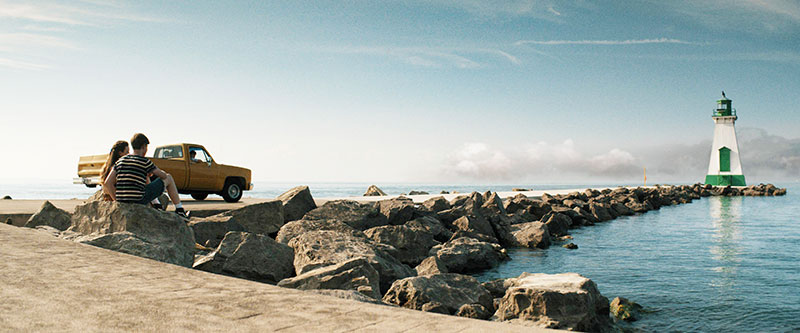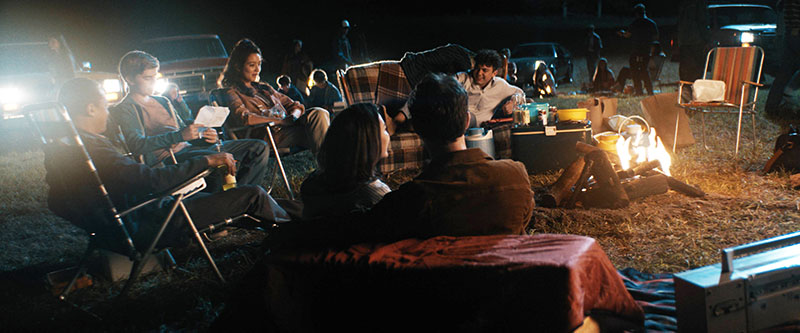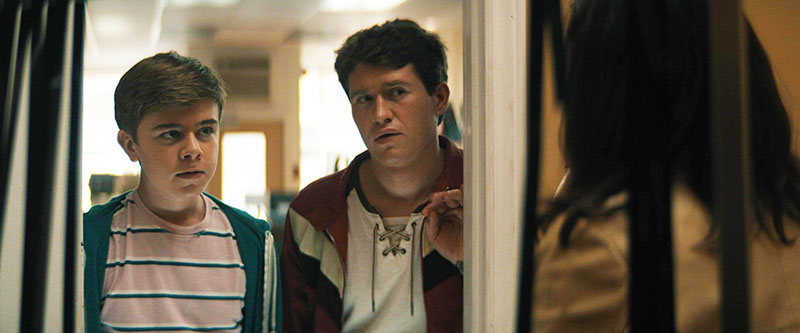The finishing team at Eggplant Picture & Sound in Toronto handled the conform, VFX pulls, grade, online and a portion of compositing for the new series, working remotely on Mistika.

The Hardy Boys Season 2, released on Hulu streaming service, returned to fans in April, six months after the finale of Season 1, building on the drama of the first series with new characters and mystery.
Post production for the series was completed at Eggplant Picture & Sound in Toronto. The team started to work with the DP Gregor Hagey and showrunner Jason Stone early in pre-production to develop the look they wanted to achieve this time. Senior Colourist Mark Driver said, “Based on those discussions, we created a few production LUTs to be used on set. During the shoot we would process all of the dailies, create files for editorial and screeners for the producers, and look after the LTO backups of the original camera files.”
After the edit in Avid Media Composer was locked, the team could start on finishing. “When the Avid AAFs came to us from editorial, we conformed them into the Mistika finishing system, pulled the VFX plates from the conform and sent them to the VFX team. All the grading, finishing and some VFX were done in Mistika,” said Mark.
Looks Under Lockdown
While working on this project, Canada was still largely under COVID lockdown. For the Eggplant team, that meant pulling together all elements and stages of the project while working remotely was a large part of the challenge. Fortunately, they were able to perform the initial conform of the episodes in the working resolution (3840x1600) on the Mistika Ultima systems in the facility, and all the online work and VFX pulls could be generated from that.

Mark talked through his remote working process. “For grading, an HD version of the conform would be rendered and sent to my house where I have set up a Mistika Boutique system with a calibrated Flanders grading monitor and a set of Element panels. I would receive full-res plates for any VFX shots I was responsible for. I would grade the entire show, complete any VFX in Boutique and then send my Mistika timeline back to the facility, where everything would relink back to the full res media. The final colour screenings with the DP were done in person and screeners for everyone else were rendered out of Mistika and uploaded to Frame.io for viewing.
Since The Hardy Boys S2 was shot on Sony Venice cameras, the footage was delivered in SLog3. “However, the base LUT we used to create the look from for this season was not built for an SLog3 input. Instead, we used Mistika’s UniColor tool to convert the SLog3 gamma curve (affecting luminance) into a Cineon curve, which fit our show LUT better. From there, everything was graded into a Rec709 colour space for delivery to Hulu.”
Mistika’s Unicolor allows users to create any deliverable in any colour space and gamma curve within the same environment. Also, any adjustment to be selected and propagated across the frame, scene or even the whole project.
Reference and Inspiration

Mark drew most of his reference for the final look from other TV shows and movies. “There’s so much beautifully done content out there these days that you don’t have to look far to find something inspirational,” he said. “Also, the Hardy Boys story is set in the late 1970s and early ‘80s, a factor that drives much of the look. The production design, costumes, lighting and lensing all work together to put us in that era. All I try to accomplish with the grade is to enhance what’s there to maximise the emotional impact of each scene.”
Nevertheless, the look of the second season has changed quite a bit compared to the first, when a very warm, inviting look dominated as viewers were introduced to the characters and learned their stories. “This season, because the characters are thrust into a more dangerous situation, we’ve pushed the look of the show further to give it a much darker, more sinister feel,” said Mark. “This is what I love about grading – using colour and light to drive the emotion of a scene or show.”
For fine tuning the image, Mark used Mistika’s Bands tool, which gives the colourist separate controls for Black, Midtone, White and All Contrast. “It allows such quick and specific manipulation of distinct portions of the image. Without it I would need to waste time adding various nodes and limiting them to the specific range of the image I wanted to manipulate.”

Sharing VFX
All the VFX were also done in-house at Eggplant, making the process more straighforward than . From the conform in Mistika, they were able to render EXR plates for the VFX team directly onto their media storage where their artists could use it directly. Due to time constraints the VFX were largely done before the grade had even started, however, the artists would then supply final EXR renders that we could take right off their storage and load back into Mistika.”
A number of VFX were also done natively in Mistika. “Having a compositing background, I was able to take some of the load off the VFX team by doing some of the simpler composites, such as split screens, TV screen comps, cleanup of production equipment and the ‘vision’ effect that features quite heavily in the S2. We were also able to accomplish quite a bit of the VFX work inside Mistika by using the Boris FX Sapphire plugin.”
More Time Savers
The project’s tight deadline – consistent with most television work – made it essential to keep the post workflow as efficient as possible. Mark mentioned some of Mistika’s features that helped him and the team work faster. “The way the timespace in Mistika works is a huge time-saver. The ability to put a colour grade on each shot for shot-by-shot matching, and then use another colour grade to span the entire scene and set the overall look, really speeds things up,” he noted.

“This is especially useful in live sessions with the client. When they ask, for instance, to make a shot a bit darker, cooler and so on, similar to Unicolor, you can just modify the image in one shot and then push that correction across the whole scene. This makes iterating on a scene very quick and fluid, as you can make fast changes and see the effect immediately across everything.”
Another major time saver for the whole team was the ability to work simultaneously in the same episode on multiple systems. “While I was grading, our online editor David Fiorentino was able to work on credits, insert final VFX shots, do the formatting and all of the other tasks that go into preparing a show for final output,” Mark said. www.sgo.es



